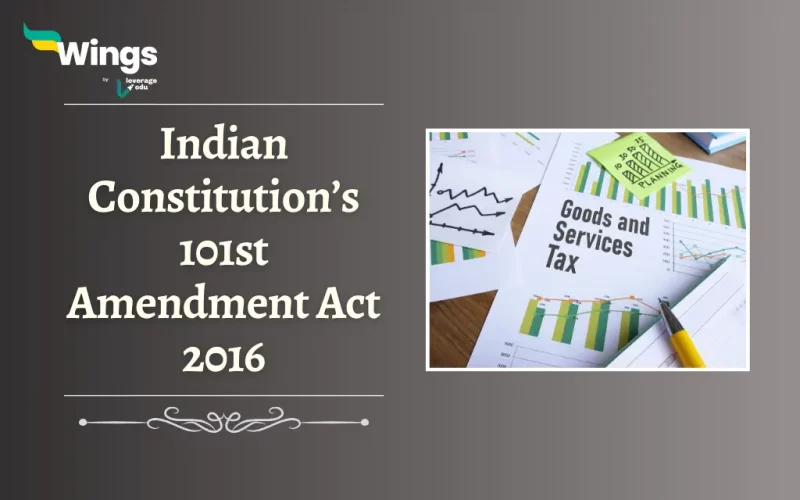The Indian Constitution’s 101st Amendment Act of 2016 has given the power to both State as well as the Center to levy the Goods and Services Tax (GST). Before this bill, this power was divided between them. For instance, let us consider that the State taxe goods of the State and the Center would tax the services making it a whole different addition to the actual amount of product. Additionally, other kinds of taxes that were levied on goods and services were Value Added Tax (VAT), sales tax, excise tax, service tax, entry tax, and entertainment tax along with the GST. However, products like alcohol for consumption by humans, and petrol remain outside of it. Moreover, the prices of petrol may in the future come under the concept of GST. Read on to learn more in detail about the Indian Constitution’s 101st Amendment Act 2016.
Everything about the 101st Amendment Act of 2016
Table of Contents [show]
Furthermore, there are certain aspects of the GST framework, like
- The Center takes the Central GST (CGST)
- The State takes the State GST (SGST)
- For inter-state supply, the Center takes Integrated GST (IGST)
For key features and their description relating to the Indian Constitution’s 101st Amendment Act 2016, refer to the given table:
| Feature | Description |
| Introduced By | The Constitution (One Hundred and First Amendment) Act, 2016 |
| Effective Date | 1st of July 2017 |
| Type of Tax | Indirect Tax |
| Levies On | Manufacture, Sale, and Consumption of Goods and Services |
| Replaces | Multiple Indirect Taxes by Central and State Governments (e.g., Excise Duty, VAT, Service Tax) |
| Coverage | Aims to be comprehensive for most goods and services |
Salient Features of the Constitution’s 101st Amendment Act 2016
This Amendment paved the way for the Goods and Services Tax (GST) in India. Here are some of its Salient features:
- Introduction of GST: This amendment introduced the Goods and Services Tax (GST), a comprehensive indirect tax levied on the supply of goods and services. GST replaced a multitude of Central and State level indirect taxes like excise duty, service tax, value-added tax (VAT), and others.
- Dual GST Model: The act establishes a dual GST structure. This means both the Central government and the State governments have the authority to levy and collect GST. This is achieved through 2 components:
- Central GST (CGST): Levied by the central government on intra-state supply (within a state) of goods and services.
- State GST (SGST): Levied by the state governments on intra-state supply.
- Common National Market: The act aimed to create a “One Nation, One Market” for goods and services across India. Therefore, this eliminates the cascading effects of taxes (tax on tax) that existed earlier, hence promoting a smoother flow of goods and services within the country.
- GST Council: The act established a GST Council, a joint body with representatives from the central government and all states and union territories. This council makes crucial decisions regarding GST, including tax rates, exemptions, and dispute resolution.
- Compensation to States: The act acknowledges that GST implementation might lead to initial revenue loss for some states. To address this, it provides a mechanism to compensate states for any revenue shortfall for a transitional period of five years.
Related Blogs
FAQ
This offers 10%reservation for Economically Weaker Sections (EWS) for admission to central jobs and private educational institutions.
The Lok Sabha passed it on 8 August 2016 and the Rajya Sabha on 3 August 2016.
The GST consolidated all the taxes under one roof making it a single tax across the supply chain.
This is everything about the Indian Constitution’s 101st Amendment Act 2016. Moreover, you may even read more blogs and empower yourself with knowledge regarding Civics and Polity!
 One app for all your study abroad needs
One app for all your study abroad needs















 45,000+ students trusted us with their dreams. Take the first step today!
45,000+ students trusted us with their dreams. Take the first step today!
